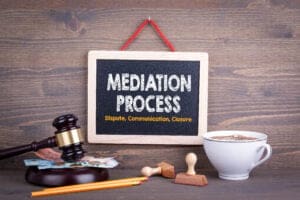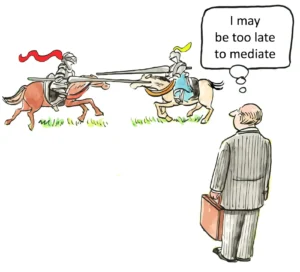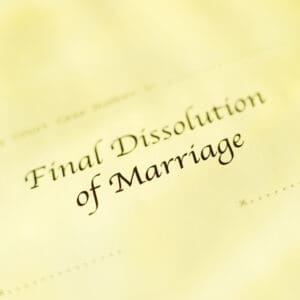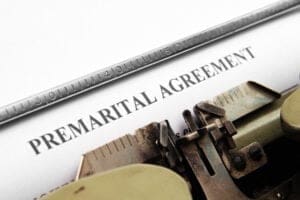What Gun Crimes Carry Mandatory Prison Time?
How do premises liability claims protect visitors on private and public property?
Premises liability claims hold property owners accountable by requiring them to uphold reasonable safety standards and promptly address hazards. When owners fail to act, these claims empower injured guests to seek compensation for medical expenses, lost wages, and other losses under civil law. This process protects the public by reinforcing personal responsibility and maintaining community safety on both private and public property.
Modern communities rely on a legal framework that encourages responsible maintenance of property. Whether you’re shopping in a large commercial retailer, attending a public event in a city park, or visiting a neighbor’s backyard barbecue, you are protected by the principles embedded within premises liability claims. These rules not only foster respect for private property but also emphasize fair compensation for those legitimately harmed due to another’s negligence.
From icy walkways in the dead of winter to rickety staircases hidden at the back of aging apartment buildings, hazards can appear anywhere. Understanding liability helps visitors stay safe and ensures owners honor their duty of care. For example, California slip-and-fall statutes detail the steps an owner must take to prevent predictable accidents, making these types of laws a crucial part of public safety.
What should I know about premises liability claims?
Premises liability law is a subset of tort law focused on injuries that occur on someone else’s property due to unsafe or defective conditions. Property owners, occupiers, landlords, and—even in some situations—renters may all shoulder responsibility depending on the circumstances.
Key concepts:
- Duty of Care: At the heart of every claim lies the property owner’s duty of care. Owners must act reasonably to keep the premises safe for those who have a right to be there.
- Breach of Duty: Failing to fix, warn about, or block access to dangerous conditions often triggers liability.
- Causation: Injuries must result directly from the hazardous condition.
- Damages: There must be actual harm—medical costs, pain and suffering, lost wages, or other quantifiable losses.
Importance of Visitor Status
States classify visitors as invitees (customers), licensees (social guests), or trespassers. The highest duty applies to invitees, with property owners expected to inspect for, discover, and remedy dangers.
Hypothetical:
A grocery store manager in Georgia, for example, must check for spills every 30 minutes. If a customer slips on an unnoticed puddle because a scheduled inspection was skipped, premises liability claims could lead to compensation for the visitor.
State statutory nuances—such as Florida’s “open and obvious” doctrine or Texas’s “no-duty for obvious hazards”—further shape outcomes.
How does premises liability law vary by state?
While the basic concepts of duty, breach, causation, and damages stay consistent, U.S. states apply their own nuances to premises liability. These differences determine the strength of a claim, the types of damages recoverable, and available defenses.
California
Under California Civil Code §1714, everyone is responsible for injuries caused by lack of ordinary care or skill. “Reasonable inspection” is required, particularly in commercial settings. A failure—like neglecting to salt an icy sidewalk after a storm—can expose the owner to liability if an injury occurs.
Statute of Limitations: Injured parties generally have two years to file a claim.
New York
The New York public-property duty obliges municipalities and property owners to maintain walkways and public spaces safely. Property owners must act upon actual or constructive notice of a hazard.
Example: If a pothole in front of a city business causes a fall, liability may depend on whether the city or business received prior complaints.
Florida
Florida follows the “open and obvious” doctrine. If a hazard—such as a wet floor—would be apparent to a reasonable person, the owner may avoid liability. However, owners are not entirely off the hook and should not create distractions that heighten danger.
Texas
The Texas Supreme Court has clarified that “predictability” and foreseeability define the owner’s duty. If a risk is “reasonably predictable” and could cause harm, failing to address it triggers liability—even if the owner did not have direct notice.
Illinois
Illinois law recognizes both actual and constructive notice. Frequent inspections and maintenance logs help shield owners from liability, but failure to act on reported or observable dangers forms the basis for many successful claims.
State Chart for Quick Reference
| State | Notice Requirement | Special Doctrines | Statute of Limitations |
|---|---|---|---|
| California | Actual/Constructive | Reasonable Inspection | 2 years |
| New York | Actual/Constructive | Public Duty | 3 years (varies) |
| Florida | Actual/Constructive | Open and Obvious Defense | 4 years |
| Texas | Constructive | Forseeability, Predictability | 2 years |
| Illinois | Actual/Constructive | Attractive Nuisance | 2 years |
When can a property owner be held responsible?
Liability hinges on actual or constructive notice and whether the owner took timely, reasonable steps to address risks.
- Actual Notice: Direct knowledge (e.g., receiving a written complaint about a broken light fixture).
- Constructive Notice: Hazard existed long enough that the owner should have discovered and fixed it.
Negligent Security is a rising source of claims. For example, if an apartment complex in Miami experiences repeated thefts and management fails to repair broken locks or install proper lighting, premises liability exposure grows.
Comparative Example:
A retail store in Texas knows its entrance mats bunch up, creating tripping hazards. If staff ignore this issue for days and a patron falls, the owner will likely be held responsible under constructive notice standards.
How do comparative-fault rules affect your claim?
Comparative fault is vital in tort law, dictating how damages split among responsible parties. Each state applies its own version.
- Pure Comparative Fault (e.g., California): Victims can recover damages minus their percentage of fault, even if they are 99% responsible.
- Modified Comparative Fault (e.g., Texas): Victims cannot recover damages if their own fault exceeds a set percentage (often 50% or 51%).
Example Scenario:
A delivery driver trips over uneven paving stones in Oregon. Surveillance reveals he was texting, but the stones had not been repaired for months. The jury finds the driver 30% at fault and the property owner 70% at fault. If the driver’s damages are $10,000, he will recover $7,000.
This system promotes individual responsibility by recognizing that accidents are often shared events. Some states, such as Alabama and Maryland, still practice “contributory negligence,” where any plaintiff fault voids recovery.
Statutory Table
| Rule Type | Example States | Recovery Limitations |
|---|---|---|
| Pure Comparative Fault | California, New York | Award reduced by plaintiff’s % fault |
| Modified (51%) | Texas, Illinois | No recovery if >51% plaintiff fault |
| Pure Contributory | Alabama, Maryland | Any fault defeats recovery |
What evidence proves negligence in a premises liability case?
Quality evidence separates successful claims from denied or undervalued ones. Owners and victims alike should understand what courts look for in premises liability litigation.
Common types of evidence:
- Photos and Video: Time-stamped images of the hazard.
- Incident Reports: Fill out forms with date, time, witnesses, and hazard description.
- Maintenance Logs: Show inspection schedules and missed safety checks.
- Eyewitness Statements: Support or refute claims about hazard visibility or actions taken.
- Medical Records: Link injuries to the incident.
- Security Camera Footage: Objective accounts of incident timing and hazard duration.
- Expert Testimony: Engineers or safety experts may assess if industry standards were followed.
Preserving the Scene:
If possible, injured parties should secure photos immediately. Owners have a duty to preserve evidence once notified of a potential claim; destroying or altering evidence (“spoliation”) can invite court sanctions.
Practical Tip:
If a slip-and-fall occurs in a restaurant, quickly gather the names and numbers of those present. Eyewitnesses lend credibility to later descriptions of the scene.
How do commercial and residential claims differ?
Commercial Properties:
- Invitees: The law holds commercial proprietors—such as grocery stores or office parks—to a “high duty” standard. They must inspect regularly, correct hazards promptly, and warn invitees about known risks.
- Premises Security: Shopping malls or large residential complexes are increasingly responsible for negligent security, especially in high-crime areas.
Residential Properties:
- Licensees and Trespassers: Homeowners generally owe a lesser duty, except for unreasonably dangerous or concealed hazards.
- Attractive Nuisance Doctrine: Owners may be liable for injuries to children attracted by hazardous features (e.g., trampolines, swimming pools) left unfenced.
Case Study:
An apartment landlord in New York City is notified by tenants of ice on the stairwell. Failing to respond for several days, the landlord ignores the risk until a fall occurs. Liability almost certainly attaches under local statutes.
Contrast:
A homeowner in Illinois hosts a barbecue. A guest steps onto a loose paving stone despite a visible warning sign. If the warning was reasonable and conspicuous, liability likely does not attach under the “open and obvious” doctrine.
What defenses do property owners commonly raise?
Property owners and their insurers deploy several defenses in premises liability cases:
Lack of Notice
The owner claims they lacked sufficient time or opportunity to find and fix the problem. For example, if a grocery store customer drops a jar moments before another slips, the store may argue that a reasonable inspection would not have caught the spill instantly.
Open and Obvious Risk
Many states bar claims when the hazard—like a “wet floor” sign—was so clear that a prudent person should have avoided it. However, this defense may not apply if business operations (e.g., product displays or distractions) increase the likelihood of accidents.
Comparative Negligence
If a plaintiff is texting, running, or otherwise failing to exercise due care, owners may argue that the visitor’s lack of vigilance contributed to the injury. Courts may reduce or deny compensation accordingly.
Statutory Immunity
Public entities may invoke sovereign immunity, which requires strict compliance with notice provisions and shorter filing deadlines. Without proving the government received effective notice, claimants generally cannot recover.
Recreational Use Statutes
In many states, private landowners opening their property for recreational use (hiking, fishing) enjoy limited liability, provided they do not charge an entry fee or engage in willful misconduct.
Practical Illustration
A private skating rink in Ohio posts large “Skate at Your Own Risk” signs, requiring all visitors to sign waivers. Although not ironclad, such warnings can reduce owner liability when combined with reasonable safety measures.
What constitutes an “attractive nuisance”?
This doctrine holds that children, due to their age and understanding, deserve extra protection from dangerous features that naturally attract them. These often include swimming pools, discarded appliances, or abandoned vehicles.
Elements:
- The landowner knows or should know children will be attracted.
- The condition is likely to result in harm.
- The child, due to age, cannot appreciate the risk.
- The burden to address or remove the danger is slight compared to possible harm.
Example:
In Georgia, a property owner who fails to secure a backyard pool with a proper fence can be liable for injuries to neighborhood children, even if they trespass.
When are government entities liable (or immune)?
Public property claims carry special legal hurdles. Municipalities, counties, and state agencies often enjoy partial or full immunity for injuries on government-controlled land.
Key points:
- Special filing procedures—such as notice of claim within 90 or 180 days—must be strictly followed.
- Some states waive immunity for gross negligence or proprietary functions (e.g., revenue-generating activity).
- Public sidewalks and parks may require a showing of “affirmative notice” and failure to repair within a reasonable time.
Case Example:
A city in Illinois receives a formal letter about a deep pothole near a school crosswalk. If the city fails to repair it and a child is injured, immunity may not apply due to “actual notice.”
How do insurance policies impact premises liability claims?
Most commercial and residential property owners carry liability insurance, but policy language shapes the course and outcome of claims.
Key issues:
- Coverage Limits: Will the policy cover all damages, or just up to a stated cap?
- Exclusions: Dog bites, pool accidents, or criminal activities may be excluded from standard policies.
- Timely Notice Requirement: Policies often require owners to notify their insurer promptly after an incident.
- Subrogation: If an insurer pays the claim, it may pursue third parties who contributed to the loss.
Tip:
Always request a copy of the “Declarations Page” of any relevant policy during a claim.
Proactive steps for property owners
Maintaining safety and minimizing liability starts with prudent management and increased awareness.
- Establish and document a regular inspection regimen.
- Address hazards—loose steps, unlit hallways, icy walks—immediately.
- Post clear, visible warnings.
- Retain records of repairs, safety checks, and hazard reports.
- Review and update insurance policies annually to reflect property changes or new features.
Proactive steps for visitors and guests
Visitors can also protect themselves and their recovery options:
- Stay alert, especially on unfamiliar or poorly lit property.
- Heed warning signs—wet floor placards, caution tape, or cones.
- If injured, document the scene, notify the property owner, and seek medical attention.
- Request incident reports and the names of any employees or witnesses.
Awareness and preparation foster both personal safety and strong claims if injuries arise.
Key Takeaways
- Premises liability balances property rights with public safety, upholding individual responsibility for maintaining safe conditions while emphasizing the personal duty of visitors to exercise care.
- Distinctions between invitees, licensees, and trespassers determine the duty of care owed.
- Comparative-fault and notice requirements are the backbone of most claims, with state law shaping critical details.
- Both owners and visitors should prioritize evidence—photographs, reports, and records form the core of every strong case.
- Being informed about state statutes—from California’s two-year cap to New York’s public duty—promotes timely, just results.
- Respecting and supporting property rights remains a cornerstone. Claims that reward vigilance, fairness, and personal accountability serve communities, reinforce law, and discourage abuse.
- Keeping up with changes in statutes and court rulings helps both owners and claimants adapt best practices for the future.
Forward-Looking Statement
As urban spaces grow and public expectations shift, premises liability law will inevitably evolve. Emerging technologies—security cameras, smart property monitoring, digital recordkeeping—will shape how owners track hazards and how visitors substantiate claims. Legislative efforts may expand or contract property rights, but the core principles of individual accountability and respect for ownership will endure. Staying aware of legal trends, insurance updates, and safety standards is the best way to safeguard well-being and uphold the rule of law for everyone.
Sources
- California Courts: Personal Injury Self-Help
- Cornell LII: Premises Liability Law Explained
- New York Regulations: Public Property and Liability
- American Bar Association: Consumer Guide to Premises Liability
- Florida Bar: Consumer Premises Liability Overview
- Federalist Society: Legal Scholarship and Analysis
- National Review: Legal Policy and Opinion
- Attorneys.Media Legal Resource Hub













